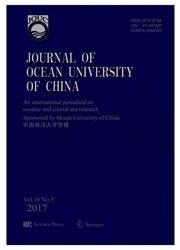

 中文摘要:
中文摘要:
This study investigated the removal of heavy metal ions from cigarette mainstream smoke using chitosan.Chitosan of various deacetylation degrees and molecular weights were manually added to cigarette filters in different dosages.The mainstream smoke particulate matter was collected by a Cambridge filter pad,digested by a microwave digestor,and then analyzed for contents of heavy metal ions,including As(III/V),Pb(II),Cd(II),Cr(III/VI) and Ni(II),by graphite furnace atomic absorption spectrometry(GFAAS).The results showed that chitosan had a removal effect on Pb(II),Cd(II),Cr(III/VI) and Ni(II).Of these,the percent removal of Ni(II) was elevated with an increasing dosage of chitosan.Chitosan of a high deace tylation degree exhibited good binding performance toward Cd(II),Cr(III/VI) and Ni(II),though with poor efficiency for Pb(II).Except As(III/V),all the tested metal ions showed similar tendencies in the growing contents with an increasing chitosan molecular weight.Nonetheless,the percent removal of Cr(III/VI) peaked with a chitosan molecular weight of 200 kDa,followed by a dramatic decrease with an increasing chitosan molecular weight.Generally,chitosan had different removal effects on four out of five tested metal ions,and the percent removal of Cd(II),Pb(II),Cr(III/VI) and Ni(II) was approximately 55%,45%,50%,and 16%,respectively.In a word,chitosan used in cigarette filter can remove toxic heavy metal ions in the mainstream smoke,improve cigarette safety,and reduce the harm to smokers.
 英文摘要:
英文摘要:
This study investigated the removal of heavy metal ions from cigarette mainstream smoke using chitosan. Chitosan of various deacetylation degrees and molecular weights were manually added to cigarette filters in different dosages. The mainstream smoke particulate matter was collected by a Cambridge filter pad, digested by a microwave digestor, and then analyzed for contents of heavy metal ions, including As(Ill/V), Pb(II), Cd(II), Cr(III/VI) and Ni(II), by graphite furnace atomic absorption spectrometry (GFAAS). The results showed that chitosan had a removal effect on Pb(II), Cd(II), Cr(III/VI) and Ni(II). Of these, the percent re- moval of Ni(II) was elevated with an increasing dosage of chitosan. Chitosan of a high deace tylation degree exhibited good binding performance toward Cd(II), Cr(III/VI) and Ni(II), though with poor efficiency for Pb(II). Except As(III/V), all the tested metal ions showed similar tendencies in the growing contents with an increasing chitosan molecular weight. Nonetheless, the percent removal of Cr(III/VI) peaked with a chitosan molecular weight of 200 kDa, followed by a dramatic decrease with an increasing chitosan mo- lecular weight. Generally, chitosan had different removal effects on four out of five tested metal ions, and the percent removal of Cd(II), Pb(II), Cr(III/VI) and Ni(II) was approximately 55%, 45%, 50%, and 16%, respectively. In a word, chitosan used in cigarette filter can remove toxic heavy metal ions in the mainstream smoke, improve cigarette safety, and reduce the harm to smokers.
 同期刊论文项目
同期刊论文项目
 同项目期刊论文
同项目期刊论文
 As(III) removal from aqueous solution using alpha-Fe2O3 impregnated chitosan beads with As(III) as i
As(III) removal from aqueous solution using alpha-Fe2O3 impregnated chitosan beads with As(III) as i Effects of dietary chitosan oligosaccharide complex with rare earth on growth performance and innate
Effects of dietary chitosan oligosaccharide complex with rare earth on growth performance and innate 期刊信息
期刊信息
